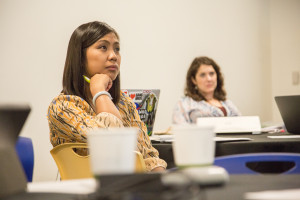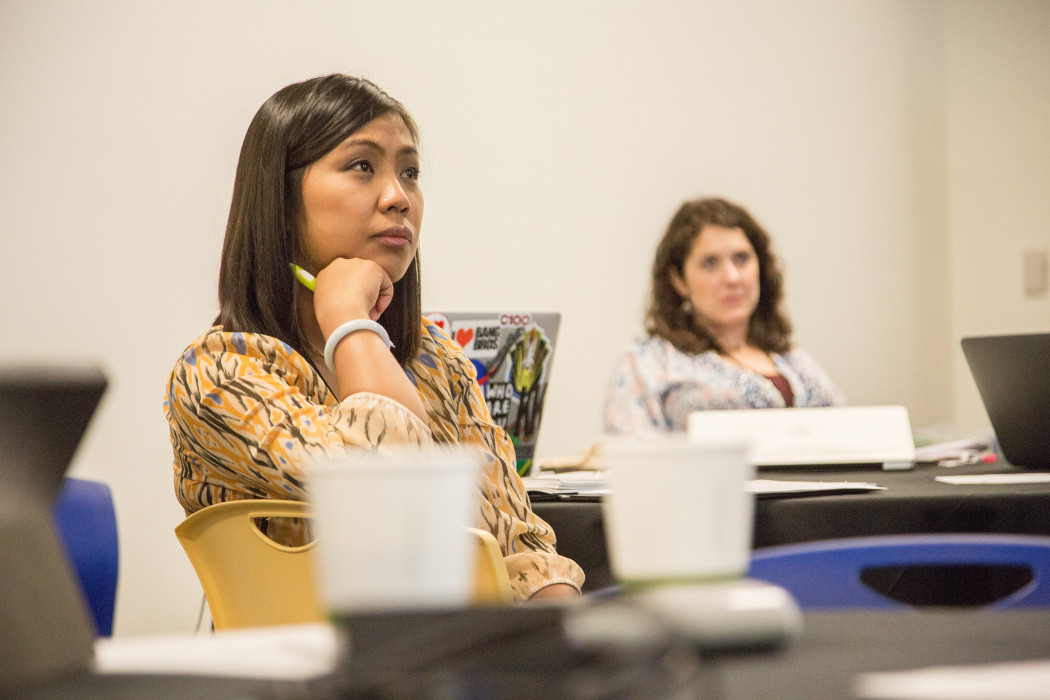>> Following the election, the leaders of North Carolina’s three largest cities – Charlotte, Raleigh and Greensboro – are all women. Jennifer Roberts was elected mayor of Charlotte for the first time, and Mayor Nancy Vaughan of Greensboro and Mayor Nancy McFarlane of Raleigh were both re-elected.
Following the election, the leaders of North Carolina’s three largest cities – Charlotte, Raleigh and Greensboro – are all women. Jennifer Roberts was elected mayor of Charlotte for the first time, and Mayor Nancy Vaughan of Greensboro and Mayor Nancy McFarlane of Raleigh were both re-elected.
That fact is cause for celebration. Women in public office serve as role models and mentors for other female candidates. They bring different life experiences to the table and often focus on collaboration and problem solving.
This situation is also significant, considering that, as of June 2015, only 18 of the nation’s 100 largest cities had women mayors.
But does this signal a trend in North Carolina? Are more female candidates coming up from the local levels?
According to a >>Meredith College report on the state of women candidates in North Carolina, women were 25 percent of the candidates in the 2014 ballot. After rising fairly steadily during the 80’s and 90’s, the percentage of women on the ballot has declined since the 2010 midterm election.
The Meredith report also points out that, historically, urban areas of North Carolina have had greater numbers of women in elected office than rural areas. Forty-four NC counties have no women serving on the Board of County Commissioners, and 41 of those are rural. About 30 percent fewer women candidates run for office in rural counties.
These trends are not limited to North Carolina. Nationally, in 2015, women hold just 19 percent of Congressional seats, 24 percent of statewide elected offices and 24 percent of state legislature seats. That’s according to data compiled by the >>Center for American Women in Politics (CAWP).
These pitiful numbers seem to belie the fact that women vote – and in greater numbers than men. According to >>CAWP , since 1980, the proportion of eligible female voters exercising their right to vote has exceeded that of eligible male voters. And since 1964, the female voters have outnumbered male voters.
So while the rise of female mayors in our cities is great news, it likely does not foretell a future of women political leaders in our state, as we might hope. In fact, despite national candidates like Hillary Clinton and Carly Fiorina, women across the country continue to face serious obstacles as candidates.
Women often don’t see themselves as viable candidates, and they fear the voting public is weighted against them. They are often focused on family and other responsibilities, leaving little time to consider running for office. They are less likely to be groomed for office or recruited as candidates through the traditional power systems.
And a new study by >>Vanderbilt University confirms what many of us have known for years: Female candidates have to be more qualified than their male opponents to win. Why? Researchers found that people were more likely to identify male names and photos as leaders, presidents or executives. The study uncovered subconscious bias that often shows up in the voting booth.
The good news? Much of that bias against women can be overcome by giving voters information – facts. That means that by focusing on educating voters about the qualifications of female candidates, and empowering women to run, we can build success.
So today in North Carolina we celebrate the leadership of our three big-city mayors. And we hope that they can serve as examples to usher in a new generation of women leaders.
But we also use this opportunity to remember that we all can play a part in getting more women elected. Encourage your friends to get involved in politics, even on local boards. Support female candidates at all levels. Volunteer on their campaigns. Help raise money. And, look in the mirror – you may be the perfect candidate to support in the next election.

There are no comments
Add yours